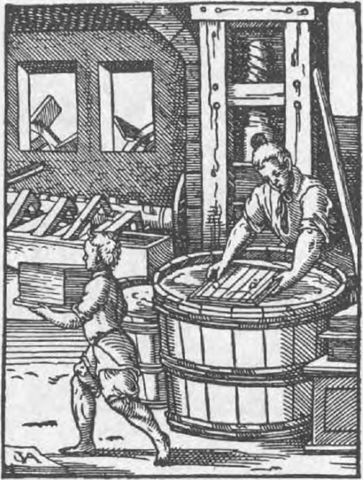Understanding the history of paper and how it's made
I make paper jewellery. Take a look here to see some. It's a material I love working with but I find it hard to express why. Also for someone who works with paper I was really quite ignorant about how it is made. So, I'm on a journey to understand more.
Over the coming weeks I aim to publish a few blogs around the subject of paper, and so I'm starting with a broad overview of the history. Most of what I discovered was through reading Paper, Paging Through History by Mark Kurlansky.
I think the two biggest surprises for me were that people have only been making paper from wood for just over 100 years, and that in England we've only been making paper of any kind for a little over 500 years. Although paper was invented by Cai Lun in China in 105 CE, it took until 1309 for it to be first used in England.
Williams Caxton's famous first printing press in England opened in 1477. But that was 18 years before our first paper mill was founded. From 1309 to that point we imported all our paper. And paper, at that time and for many years after, was made from rags.
Yes, rags, old clothes. Mills had to be located near large population centres so that the rag collectors could ply their trade. As Kurlansky notes, 'Aside from the Hollander beater and the medieval innovations of waterwheels and wire moulds, paper making in late-eighteenth-century Europe was not that different from what it had been like in ancient China'

It was only in the mid-nineteenth century when demand for rags was far outstripping the supply, that European scientists and businessmen began to seriously consider other alternatives. It took a while for the use of wood to catch on, as let's face it, using wood is rather counterintuitive. It's hard and very un-paper-like compared to cloth. It needs to go through a range of different processes before it arrives at a usable pulp. Also, once England did turn to using wood pulp, as we did almost completely by the end of the nineteenth century, we had to import it as we didn't have enough forests.
I say almost completely because as Kurlansky notes, 'Even today, the finest paper, used for quality stationery, artwork, or currency, is often made from linen or cotton, not wood.' And what we do with that fine paper is perhaps a good topic for another blog. Watch this space!
